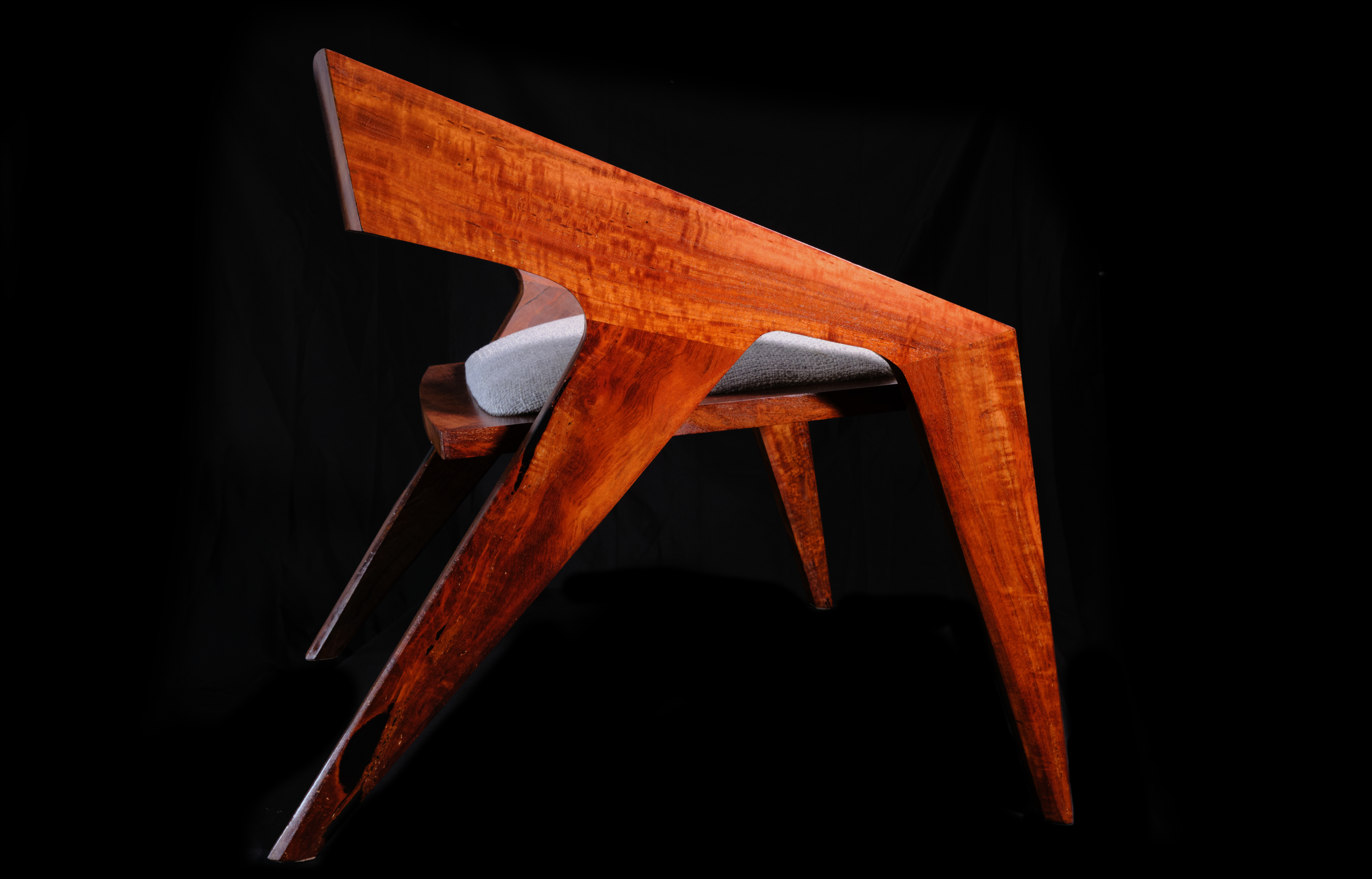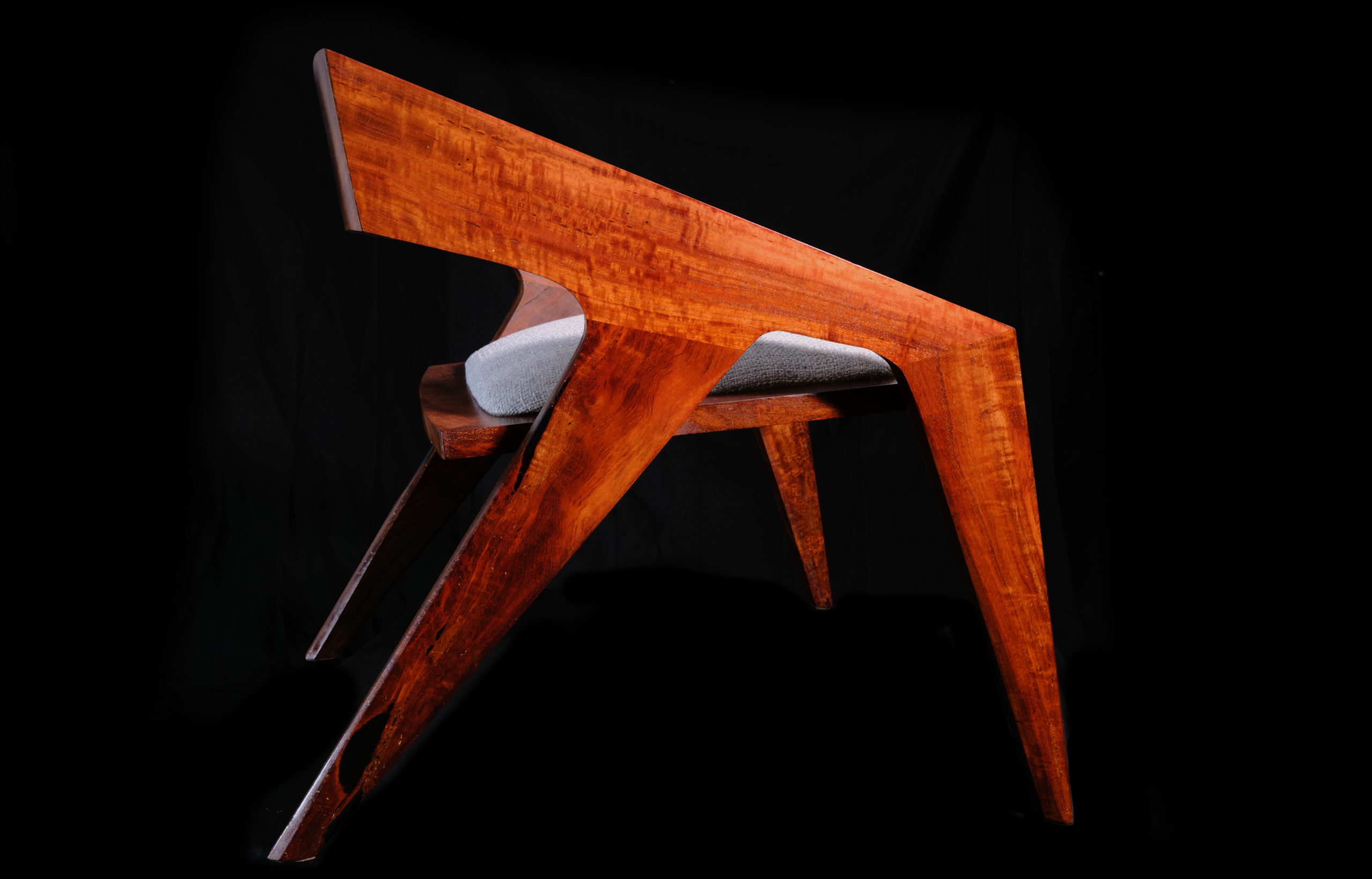
The first thing any non-woodworker does (and some woodworkers, too…) to decide the quality of a piece of furniture is to run their finger tips across its surface. “Ahhh“, they affirm, “smooooooth.”
The decision is instantly made: this piece is categorised as ‘good’.
The human finger tip is a remarkable thing, capable of detecting a change in a surface equivalent to the depth of a fingerprint ridge: somewhere in the region of 0.2 to 0.4mm. As far as I’m aware there is not yet any robot with this level of sensitivity.
But how to make wood smooth? How to achieve the seemingly impossible task of flattening a surface to a tolerance of 0.2mm? In an ideal world this would be done with a cutting tool. Cut wood is a wonderful thing, and a handplane in the right hands, and on the right wood, leaves a glassy finish that no other method can compete with.
With the right wood. Some woods are… disagreeable. Unfortunately these woods are often the most interesting to look at. It’s the figure that causes the beauty, and the problems. The changes in grain direction that result in a highly decorative piece also mean that any time a blade runs over it a smooth surface will be left where the grain is going the right way, and a torn surface will be left everywhere it goes the opposite direction.
Sometimes this can be tamed with a finely set plane with a steep blade angle. I have a smoothing plane of my own making with a mouth (the gap between the blade and the hole it pokes out of the bottom) of 0.3mm, and a bed angle of 55°. A standard metal bench plane might have a mouth of 2mm or more, and has a bed angle of 45°. These differences allow the plane to hold down the shaving as the plane severs it from the surface, and usually results in a smooth, glassy finish regardless of what the grain is doing.
But some wood is so cranky that nothing works. This Red Gum was the most difficult wood to work that I’ve ever encountered.
What I wanted for this chair was the legs be shaped with a tapered chamfer. This would reduce the apparent bulk of the legs without removing much material, leaving it at maximum strength while appearing to be delicate and fine. I’m a sucker for a tapered chamfer.
The chamfer creates a hard shadow line that draws the eye, while reducing the visual bulk of the legs. They catch the light in a way that a rounded edge will not. At any time the size of the feet you’ll see can be as little as 12mm. The actual width of the leg is closer to 50mm. It’s a nice trick to stop something looking blocky without making it weak.
But I couldn’t make it work with cutting tools. All that figure comes at a price, and that price is sanding.
It would have been quite easy to shrug, say ‘not today’, and use an electric router to round over all the edges. But this would have been an inferior option, and just didn’t sit well with the mental image I had of the finished piece.
“Finishing” a piece means more than just spraying it with lacquer and calling it done. Finishing is about creating a smooth, flat and level surface for the ‘finish’, whether that’s oil, wax, lacquer or shellac, to sit on. And this surface needs to be perfect, or the finish medium will highlight every one of the makers’ inadequacies. It . . . is . . . very . . . time consuming. And, above all, sanding is boring as all hell.
Ones mind tends to wander. When it’s going well my mind settles on reliving my University sporting triumphs. That doesn’t last long, because there weren’t many. When it’s going badly I relive the regrets and mistakes of my life. There are more of those. That girl I treated badly when I was 19, and still feel guilty about. That abusive ex screaming at me in line at the airport. ‘This is Your Life’ as a slideshow of pain and misery.
When you’re sanding your way up through the grits you have to pay very careful attention to scratches. Each jump in grit – from 80 to 120, to 180, to 240, to 320, to 400 and on, the objective is to remove the scratches of the previous grit. You must follow the grain, because if you cross it you’ll rip fibres in half, exposing the end grain which will absorb finish and reflect light differently to the edge grain, and stick out like a sore thumb.
You need bright, raking light to see your shitty work. The low angle of the light highlights all the scratches you’ve missed. Because the labour of sanding requires, nay demands, perfection, I become obsessive over every flaw. When I get like this my self talk takes my father’s voice. “You moron. You’ll amount to nothing.” It’s amazing how some memories echo around your head, and more amazing still, the activities that trigger them.
I worked every surface over and over again, wearing through my finger tips, literally bleeding for my art. But when I was done I sat back and gazed upon my work, finally pleased with something I’ve done. My father piped up again. “You arrogant shit”. Some people can’t be pleased.
I began to apply the finish. Trying something new on a finished piece is almost always a mistake, but I’d done some test pieces with offcuts and genuinely thought it would work.
Aussie Oil is a fantastic product, one I’ve used on small items many times with beautiful results.
With three coats applied I was done for the day. I hung up the buffing pad to dry, put all my tools away, swept the floor and shut off the lights. My workshop has no windows so I was plunged into pitch darkness. I lifted up the roller door and the low evening sun streamed in.
I took a moment to savour the view: my bench with my tools hanging behind it, my bandsaw tucked away to the side to make room for the assembly table, and an almost halo light emanating off the chair I had just completed, angelic in its
“What the FUCK IS THAT?!”
I stood dumbstruck in disbelief at what I was seeing. I’d been sanding, sanding, sanding and sanding for 11 hours. The beautiful evening light captured perfectly the bumps and undulations I had left on the top of the backrest. I had sanded this chair to within an inch of its life. I had lost my damn finger tips. I ran my fingers over the back, willing it to not be true. I couldn’t feel a thing. Yet in the right light, and with the still wet finish, there it was, plain for all to see.
Resilience is a character trait that is essential to success in this (or really, any) business. And not one I have much to speak of. My crest was fallen. My ex’s voice piped up again. “You’re a fucking loser.”
I shut the door, and didn’t open it again for 5 days. 5 days of rumination. 5 days of ducking my wife’s questions on when I’d be taking it to the gallery. I knew what I would have to do, but just didn’t want to do it. I would have to scrape the finish off the entire thing and start sanding. Again.
When I finally summoned the courage to roll up the workshop door the finish was cured and dry. And I was underwhelmed. What had seemed to promising on the test piece had failed to materialise on the chair itself. It lacked the lustre I wanted, and was doing very little to highlight the extravagant grain I’d struggled so much with.

Oil finishes are easy to fix when there’s a problem. But Aussie Oil isn’t a normal oil, like Tung or Linseed. It is a mystery blend that contains ethanol and dries almost as fast as shellac, so I had no idea how it would respond to further applications after being sanded back. And given its lacklustre performance I was hesitant to blindly apply more and more layers and just hope for the best.
In the end I refinished the entire chair with Blonde Shellac, my usual weapon of choice, and I’m very glad that I did. The shellac brought out the grain and lustre that I was looking for. Catching light in all the right places without losing the feel of the wood.
I learned many things from finishing this chair: that sanding encourages tunnel vision, that seeking perfection is a fools errand, and that the combination of the two is not good for my mental health. I learned the value of a card scraper, which is faster and more effective than sanding at levelling a surface. I learned the importance of really checking before I race through to the end. I learned that even when there’s a major problem, all is not lost. Finally, I learned not to rush the finish process.

